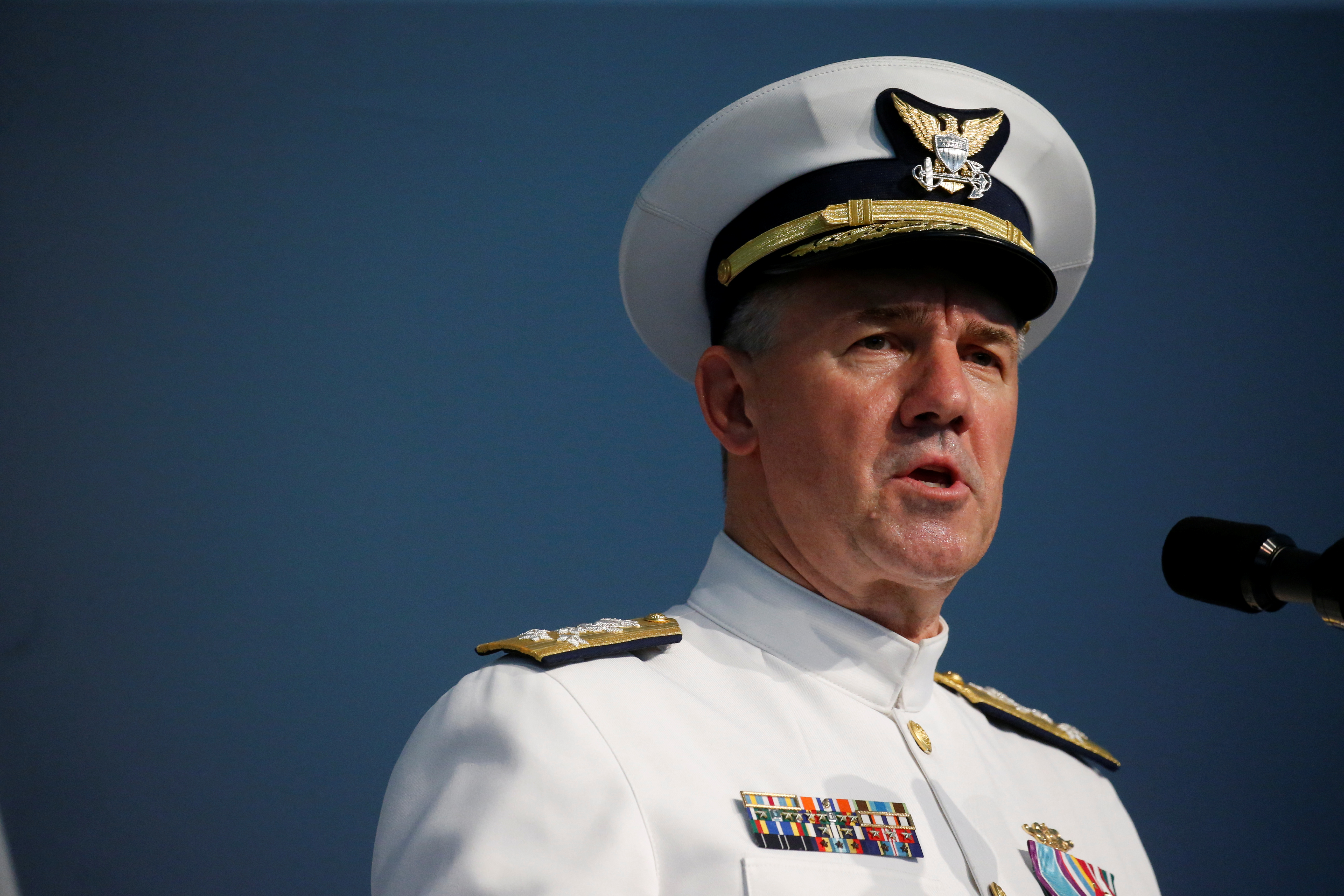The US Coast Guard plans to request more icebreaker funding next year
Adm. Karl Schultz, commandant of the Coast Guard, hopes to have three new heavy icebreakers by 2028.

U.S. Coast Guard commandant Adm. Karl Schultz said on Monday that the agency plans to ask for additional icebreaker funding in the 2021 budget.
Speaking at the Sea-Air-Space maritime exposition near Washington, D.C., Schultz also defended the Coast Guard’s decision to award the icebreaker to Mississippi-based shipyard VT Halter.
Late last month, the Coast Guard awarded a $745.9 million contract to VT Halter for the design and construction of the first U.S. heavy icebreaker in 40 years, with options for two more vessels bringing the potential award total to $1.9 billion.
In the budget for 2020, the fiscal year that begins on October 1, 2019, the Coast Guard requested $35 million to maintain the polar security cutter program — what Schultz called “bridging money” to keep the program “marching forward.”
But in the 2021 budget, Schultz said, “you’ll see larger asks here to get after the second and the third polar security cutters.”
If the additional vessels are funded and construction targets are made, Schultz hopes to add three new heavy icebreakers to the Coast Guard’s fleet by 2028.
Some commentators were surprised by the choice of VT Halter; Ryan Uljua, a senior fellow at the Arctic Institute, said he was “shocked” at the decision. Uljua had expected the award to go to Fincantieri Marinette Marine, an Italian company with headquarters in Wisconsin that had partnered with Philly Shipyard of Philadelphia to offer a bid. Fincantieri designed icebreakers for Canada and ice-capable vessels for Norway, and in 2018, representatives from the company said they would model U.S. designs on the Canadian vessels in order to save time and money.
That timing is key. The Government Accountability Office released a report last fall outlining skepticism over the Coast Guard’s ability to recapitalize its fleet quickly. The Coast Guard, the report said, set an “optimistic schedule” based not on what was realistic or feasible but upon operational needs — namely, the end of the Polar Star’s service life. In doing so, the report warned, the agency may be overlooking potential delays and schedule risks.
Meanwhile, VT Halter has a history of serious accidents, which prompted Sen. Elizabeth Warren to request a criminal investigation into the company and to push for a new law requiring the Pentagon to examine and track workplace safety incidents with federal contractors.
But Adm. Schultz pushed back against characterizations that the icebreaker award process didn’t go as expected.
“I think the contract went quite well,” he said. The Coast Guard’s partnership with the Navy’s shipbuilding office drove down costs, Schultz said — to the tune of $300 million — and accelerated the delivery schedule.
“We’re on an aggressive timeline to do this,” he said, saying that the work had already gone out to VT Halter. “We’re off to the races.”
If all goes according to plan, this ship will be operational by 2024. In the meantime, the Coast Guard’s commandant will continue to make the case for additional icebreakers.
Schultz said they would soon “go back to the till” to request funding for additional vessels.
“There’s money in the [FY]20 budget that keeps the program moving forward, and then the [FY]21 budget will be another big tranche of money to get after awards of the second and the third,” he said.
The first heavy icebreaker to be constructed in decades will replace the aging and breakdown-prone Polar Star, which is on “life support,” Schultz said.
“The first polar security cutter is going to go down and break up McMurdo Station,” he said. “It’s the second and third hulls, or subsequent hulls, that give us some increased presence in the high-latitude region.”
He highlighted the Coast Guard’s increased focus on geopolitics and security, repeating a mantra that has become common in his public addresses.
“Presence equals influence up there,” he said. “When we’re not there, others are.”